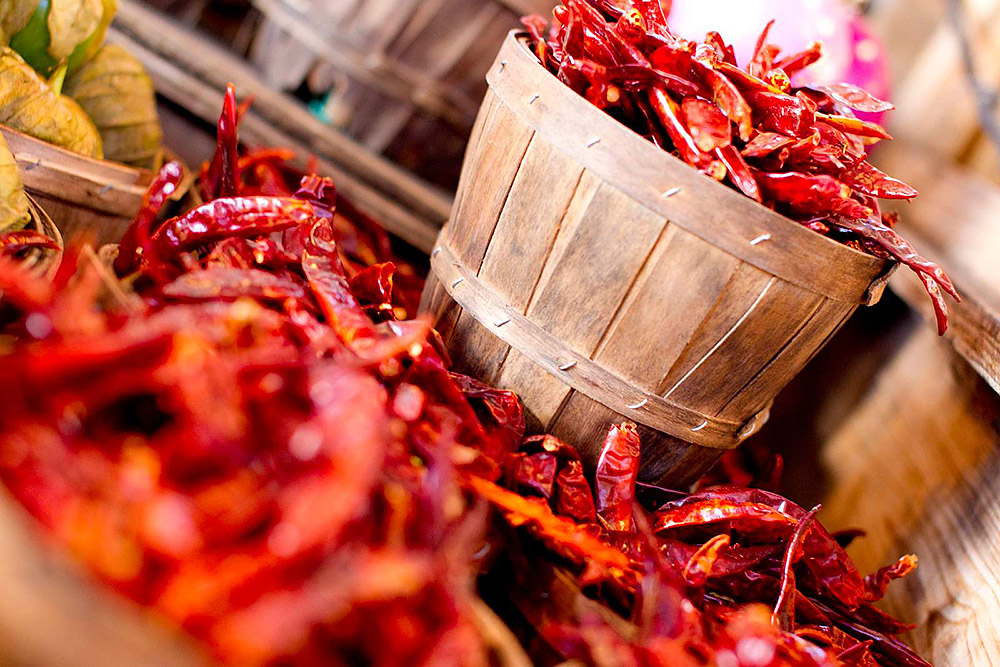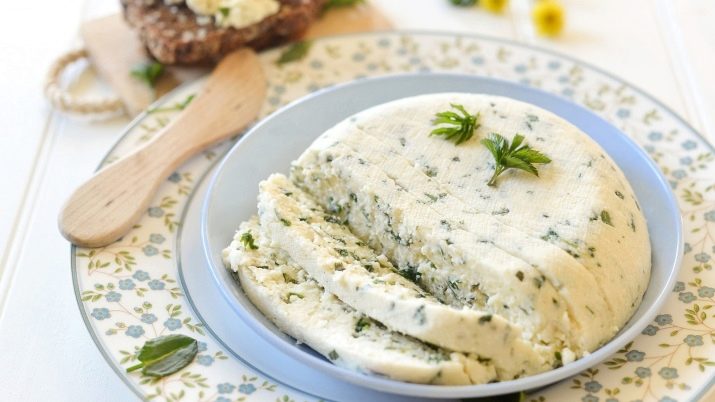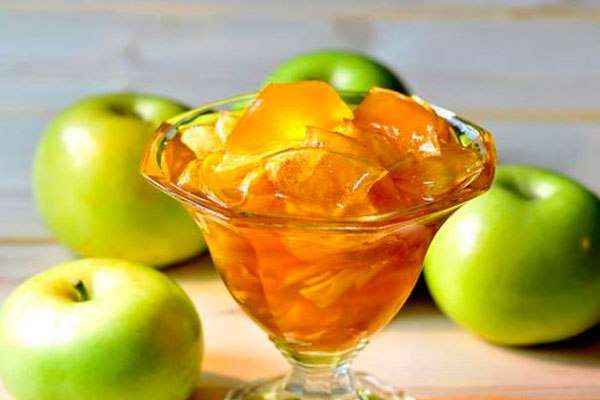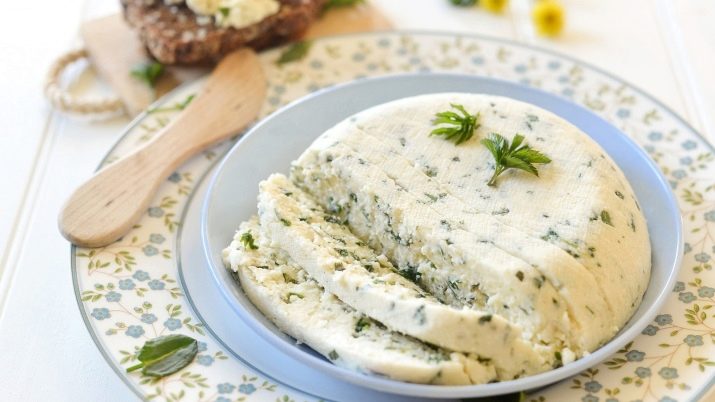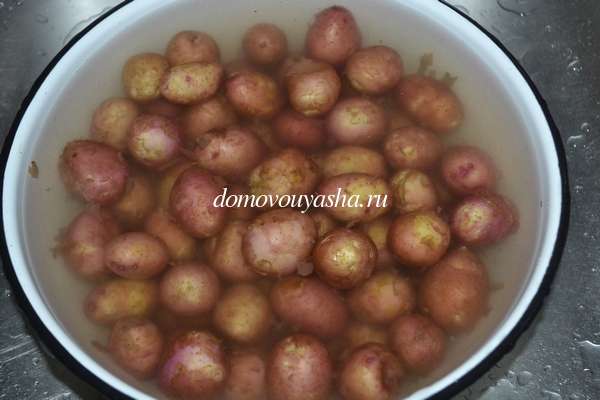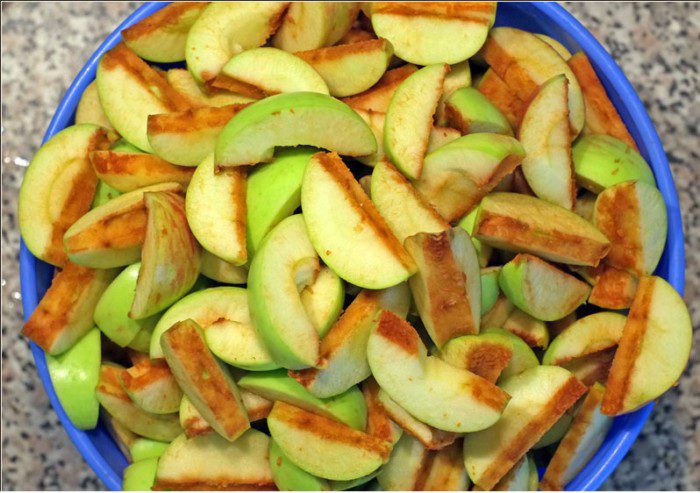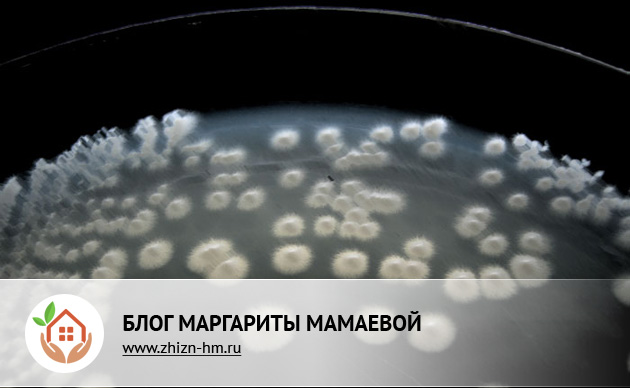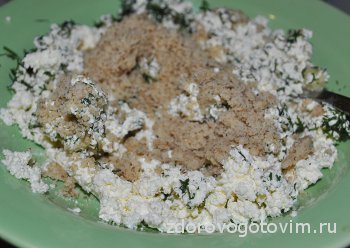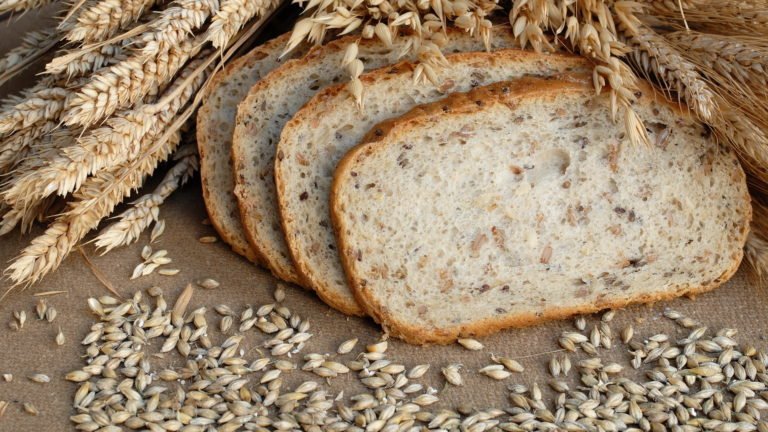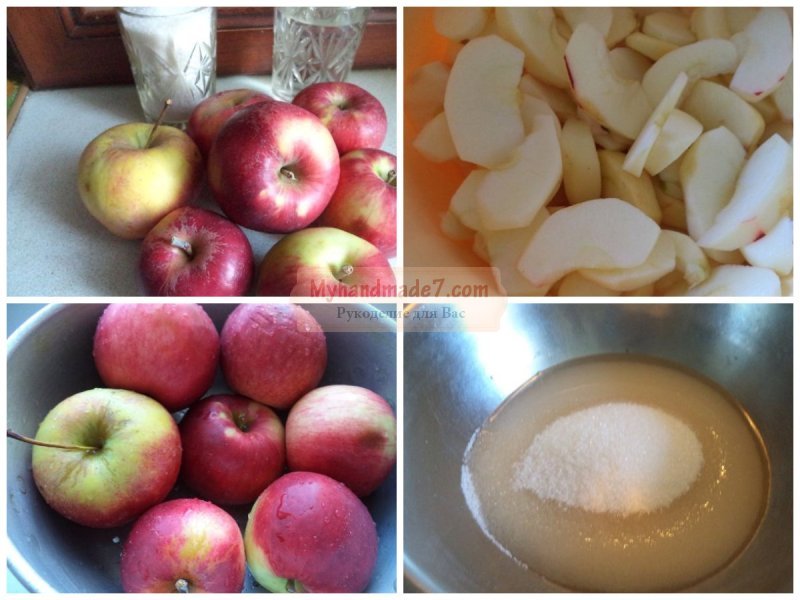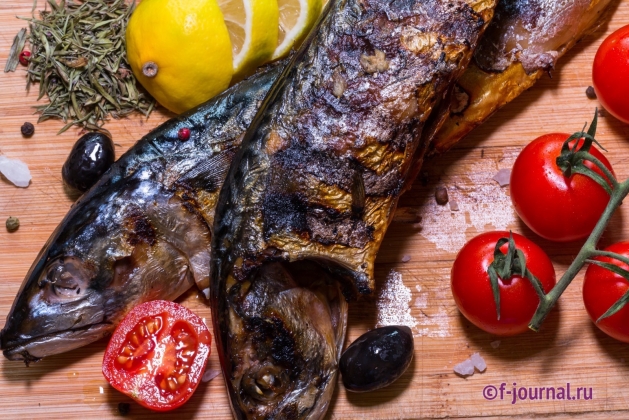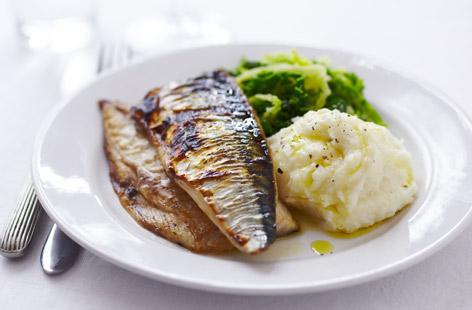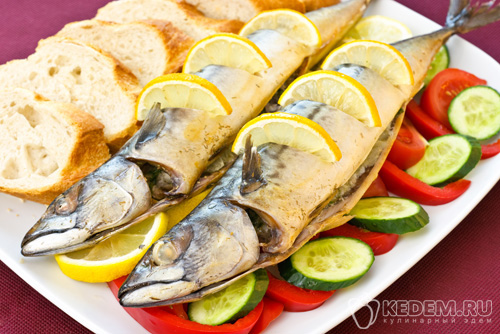Red hot peppers have amazing properties. Red pepper
Bitter peppers are well known to housewives. Added a little more than necessary, and the food becomes impossibly spicy. However, such pepper has a lot of fans, because dishes with burning seasoning are not only fragrant and tasty, but also have medicinal properties. Therefore, more and more people are interested - in what ways can I prepare hot peppers to diversify home cooking in winter?
The first Indians began to grow capsicum, and in the countries of Europe and Asia, he came relatively recently - in the XVI-XVII centuries. But these days it is even difficult to imagine Indian, Korean or Chinese dishes without a characteristic burning taste. The unique properties of hot peppers are gradually gaining more and more fans around the world. Why is this happening?
- Hot peppers contain many vitamins useful for the body - C, group B and carotenoids. Interestingly, there is half as much vitamin C in lemon as in raw pods of hot pepper. In addition, pepper has fatty oils and sugars.
- The severity of pepper directly depends on the capsaicin alkaloid included in its composition, and this substance is able to relieve pain and reduce inflammation.
- Thanks to bitter pepper, endorphins are produced in the body - hormones of happiness, joy and pleasure. They reduce stress and help cope with insomnia.
- For many years it was believed that eating spicy is harmful. Recent research by scientists suggests the exact opposite. Hot pepper improves appetite and, if consumed in small quantities, qualitatively normalizes digestion.
- Eating hot peppers is especially useful in old age. It improves metabolism and blood circulation, normalizes blood pressure, and also prevents the development of atherosclerosis and reduces the risk of blood clots.

Types of hot pepper and safety in its processing
There are only four cultural types of hot pepper: Peruvian, Mexican, Colombian and pubescent. For many years, crossing them, people have grown a great many varieties that are distinguished by their spiciness, taste, size, shape of the pods and their color. Some peppers taste almost spicy, and some varieties seem to be burned with fire.
The main thing is that all peppers are similar - they have a sharp, burning, slightly bitter taste. Therefore, in cooking they try to use them in small quantities, as a seasoning for salads, first and second courses, and less often - for pastries and drinks.
When processing hot pepper, care should be taken. Burning substances getting on the mucous membranes or micro-wounds on the hands can cause pain and a strong burning sensation. Therefore, when harvesting pepper, the room should be well ventilated. It is advisable to wear gloves on your hands. In addition, you need to try not to touch the face with your hands, and even more so - the eye. If pepper does get into your eyes, rinse them with plenty of water.

Methods of drying hot pepper
It is very convenient to store hot pepper in dried form, and there are several ways to dry it. In this case, you can dry both whole pods and halves of peppers with seeds already removed.
The easiest way is to hang pods on ropes or strong, heavy threads. You just need to choose a well-ventilated room, a country terrace, a canopy, an attic or a loggia, where it is dry and warm. It is also advisable that the direct rays of the sun do not fall on the pepper. It is convenient to string pods through the stalks. It is necessary to ensure that they do not touch each other, and air can blow them from all sides.
It is also convenient to spread the peppers on trays covered with paper, small grills and large dishes anywhere, for example, on a wide windowsill. The main thing is not to forget from time to time to stir up pepper “raw materials”.
To speed up the drying process, the pods are placed in a stove oven or electric dryer. With this method, it is important to choose the optimal drying mode so that the pepper is dried, and not baked. In the oven, it is good to set the temperature + 50 ° C and slightly open the door. In an electric dryer, peppers of the right condition can be obtained in about 12 hours.
Store the dried pods whole or ground. For their grinding, they usually use a food processor, a coffee grinder or a mortar with a pestle. Dried peppers do not like moisture, so you need to store it in a hermetically sealed container: glass jars, wooden boxes, birch bark baskets or paper bags. Many leave a rope with pods in a conspicuous place - to decorate the kitchen.

Pickling
There is a saying among the inhabitants of the Caucasus: "Nothing warms you on cold days like a good spicy snack." Pickling peppers is not difficult. For 1 kg of capsicum you will need: a large bunch of dill, cilantro and mint, 3 heads of garlic and 300 ml of grape vinegar. The best option for pickling is vinegar, which is made from white grape varieties. In addition, when marinating, peas of black and allspice, bay leaf, cloves, coriander, salt and sugar are used.
Very ripe peppers are very good in taste. Ideally - plucked right from the bush just before pickling. From the greens only leaves are used, sprigs for pickling are not needed. You do not need to cut greens. Garlic just needs to be broken into slices without peeling it. Then, in combination with pepper, it will serve as an excellent savory appetizer.

The pods are washed and pierced at the stalk with a toothpick or knife so that there is no air inside the peppers. The next task is to soften the pods slightly. To do this, they are placed in a pan with water, pour boiling water there and kept for 3-4 minutes under a closed lid. Then the water is drained. This must be done at least three times. This method will allow peppers to become softer, but not lose their shape. The same result can be achieved if the pods are blanched in boiling water for 2-3 minutes, and then turn off the fire and leave them in the pan under the lid for another quarter hour.
Marinating jars are sterilized in advance. For 1 kg of peppers you will need 3 cans of 0.8 l or 5 - of 0.5 l.

After all the preparation, you can begin to prepare the marinade. 6 tsp are put in 1.5 l of water. granulated sugar, add water to taste, add all the leaves from the greens, garlic cloves, 6-8 bay leaves, 15 black peas and 5-6 allspice peas, 1 tbsp. l coriander seeds and 4-6 cloves. Marinade is boiled and poured into it grape vinegar. Then the marinade should boil a couple more minutes.
Green leaves with garlic spread on the bottom of glass jars. Peppers are placed on top of them and the contents are poured with hot marinade with spices to the very top. After that, the banks are corked. You can store them at room temperature.
In the video, Olga Papsueva talks about the secrets of pickling hot pepper at home.
Pickling
Salting is an excellent way of harvesting for the winter, because it allows you to save a maximum of useful vitamins and minerals in vegetables. Hot peppers can be salted in different ways.
If the house has the ability to store food in a cool room, for example, in a cellar, pods of hot pepper can be salted without being rolled up in jars. Pepper is pre-baked in the oven to make it soft, and allowed to cool. Then the pods are placed in pre-sterilized dry jars, placing peeled cloves of garlic, dill branches, horseradish leaves and black currant between layers of pepper.
To prepare the brine, 60 g of salt (not iodized!) And 80 kg of vinegar are diluted in 1 liter of water. The water is boiled, allowed to cool and poured into jars of pepper. Under oppression, the pickle is left at room temperature for three weeks, and then taken out in the cold.

If there is no cellar or a cool veranda in the house, the jars are filled with hot brine, a little vinegar is added and sterilized: 0.5 l for 20-25 minutes, and 1 l for 35-45 minutes. After that, the banks are closed with lids. You can store them at room temperature.
In the video, Maxim Punchenko shows how to cook tsitsak - hot savory pepper in Armenian.
Pepper paste
Hot pepper pastes are used in the cuisines of almost all Asian countries and many countries of the Mediterranean. They are added to ready-made dishes, as well as when cooking soups and while stewing meat and fish. For aromatic hot pasta you need only five ingredients: 100 g of hot pepper, 1 kg of bell pepper, 5 heads of fresh garlic, 2 tbsp. l salt and 5 tbsp. l vegetable oil. To give different taste shades during the preparation of pasta, you can add cilantro, celery or mint.
Both types of peppers are washed and cleaned from seeds. Garlic is also peeled. Then peppers and garlic are crushed in a blender or food processor to a homogeneous mass. The resulting puree is spread in cheesecloth and suspended so that the juice flows. It does not need to be poured out! Pepper juice can be frozen in small portioned containers, such as ice cubes, and used in the winter months as a seasoning.
Transfer the mashed potatoes onto a baking sheet, add salt and oil to it and mix thoroughly. In the oven, heated to + 150 ° C, pepper paste is cooked for about an hour. Store it in small plastic containers in the freezer. Open paste is recommended to be stored in the refrigerator and used for 10 days.

Preservation of hot pepper without salt
Hot peppers on their own are an excellent antimicrobial. That is why it is consumed in large quantities in southern countries. Due to the antimicrobial properties, pepper blanks can be made with unusual preservatives.
To preserve hot pepper without salt and vinegar, first you need to wash, dry and pierce with a toothpick. Then sterile jars are filled with whole pods and cold pressed extra virgin olive oil is poured. If desired, a little spicy herbs can be added to the pepper. Banks are closed with lids and stored in a dark place. In this type of preservation, olive oil will acquire a bright pepper aroma and become sharp in taste. Therefore, it can be used in winter as a salad dressing.
In another way, hot peppers canned with natural apple cider vinegar. Preparation of pods and cans is the same as for oil preservation, only pepper is poured not with oil, but with vinegar. As in the first case, to it, if desired, you can add spicy herbs - mint, rosemary or oregano, as well as honey - 2 tbsp. l 1 l jar. Pepper will be ready for use in a month. A fragrant and spicy vinegar, like oil, is perfect for dressing fresh salads.

Jan-10-2017
What is pepper?
What is capsicum, the benefits and harm to human health of peppers, what are its medicinal properties, all this is of great interest to those who lead a healthy lifestyle, monitor their health, and are interested in alternative methods of treatment, including using vegetables and fruits. So we will try to answer these questions in the following article.
Capsicum ánnuum is a species of annual herbaceous plants of the genus Capsicum of the Solanaceae family, or its fruits. Agricultural vegetable crop. Varieties of chilli are divided into sweet and bitter. The latter, known as red pepper, is pungent with the alkaloid capsaicin. Varieties with fruits of sweet taste - sweet pepper.
Capsicum can be divided into two large groups - sweet and bitter peppers. Both species are widely used in cooking and traditional medicine.
Pepper is an ancient cultivated plant, which began to be cultivated more than 2 thousand years ago. His homeland is Central America (Mexico and Guatemala). At the end of the XV century. pepper was brought to Spain and Portugal, from there - to the southeastern countries of Europe and the Middle East.
To the south of Russia (to Astrakhan) pepper about a nickname from Turkey and Iran. In the open pound, it is grown in the North Caucasus and the Lower Volga region, in the protected pound (mainly in film greenhouses) - everywhere, in the north - in winter greenhouses.
By taste, pepper is conditionally divided into sweet (chilli) and hot (bitter, spicy).
Biologically pepper is a perennial plant. It is only cultivated as an annual plant in our climate. If for the winter it is transferred to a warm room, it will grow and bear fruit further.
30–45 days after the formation of the ovaries, technical ripeness of the fruits occurs, and later - biological.
Harvest the fruits in the phase of technical maturity. Fruits that are fully formed are considered technically ripe: the length of the elongated fruit is at least 6 cm, the diameter of the fruit is at least 4 cm, with thick fleshy walls. In the phase of technical ripeness, the fruits have a color typical of this variety (light green, green, yellow). Seeds at this ripeness are in milk or wax ripeness. There are a number of varieties in which the fruits are harvested and used in the phase of biological ripeness, when they acquire the color characteristic of the variety: cream, red, yellow, purple.
The fruits in the phase of biological (physical) ripeness are tasty, juicy and contain more vitamins, because during this period the seeds ripen in the fruits. But usually the fruits of sweet pepper are harvested in the phase of technical ripeness, and when stored after 25-30 days, they acquire a color characteristic of physical ripeness.
The fruits of hot pepper are harvested in the phase of biological (seed) ripeness.
Pepper harvesting is reusable. Regular fruit picking contributes to an increase in yield, reduces the falling of ovaries. After collecting the fruit remaining on the plant, the ovaries begin to grow rapidly. With manual harvesting, technically ripe fruits are harvested every 5-10 days, and biologically ripe - as they ripen, with stalks.
The more often fruits are harvested without overexposing them on the plant, the higher the yield will be, since the resulting ovary and underdeveloped fruits will receive a greater amount of nutrients after harvesting large fruits.
Since the stalks of pepper are very fragile, they must be removed very carefully.
Harvesting is completed before the onset of frost. In some years, pepper bears fruit until October.
Collected pepper fruits can be stored for up to 2 months in a dry and moderately warm room.
Useful properties of pepper:
Pepper, especially red, is a rich source of ascorbic acid. This substance is more in it than, for example, in blackcurrant and lemon. Pepper also contains a lot of carotene, protein, sugars, glucose, fructose, rutin, mineral salts, organic acids, vitamins B9 and PP. To ensure the daily needs of the body in these vitamins, it is enough to eat 50 g of sweet pepper daily.
For medicinal purposes, hot pepper is mainly used. Its taste is determined by the alkaloid-like substance capsaicin, which increases the secretion of gastric juice and its acidity, and also has a bacteriostatic effect. Pepper seed oil also has these properties.
However, both in cooking and for medicinal purposes, this vegetable should be used with caution. It can cause severe burns to the mucous membranes and other tissues, as well as an upset gastrointestinal tract. Therefore, hot pepper is used mainly externally.
For the preparation of medicines at home, large red fruits are selected.
Pepper tinctures and ointments are used for neuralgia and radiculitis. Sometimes tincture of pepper is taken orally to increase appetite and improve digestion, but this is permissible only after consulting a doctor. Due to the bactericidal action of hot pepper in small quantities, it can be used for gastrointestinal upsets.
Sweet pepper is one of the most valuable vegetable crops. This is a natural multivitamin concentrate. It surpasses all vegetable plants in terms of vitamin C content; 150–270 mg% of ascorbic acid (more than lemon) in green fruits of pepper contains up to 480 mg% in red fruits. There are more Vitamin C in hot peppers than in sweet peppers. Pepper can be equated to carrots in terms of vitamin A content; in vitamin B content, pepper also takes a leading place among vegetables.
Pepper is rich in carotene (12–15 mg%), rutin, group B vitamins (thiamine and riboflavin), sugars, volatile essential oils, and mineral salts.
Sweet pepper pulp contains 90% water, up to 4.9% sugars (glucose, fructose, sugar), 1.36% crude fiber, 1.51% nitrogenous substances (proteins), as well as starch, hemicellulose, and pectin.
High-vitamin fruits of sweet pepper are very important in nutrition, especially in the winter-spring period. They are used for food raw, pickled, baked, boiled and fried, used for pickling cucumbers and tomatoes. Peppers are practically not damaged during transportation and storage.
Contraindications:
Like any product, pepper can be harmful if you are intolerant of its components and allergies. It should be limited to children.
If there are severe diseases of the cardiovascular system, such as arrhythmia and angina pectoris, you should be careful about taking hot pepper, starting with small doses and observing the body's reaction.
A large dose, taken once, can cause a heart attack.
The harm of hot pepper affects patients with gastritis and peptic ulcer, when the mucous membrane of the gastrointestinal tract is damaged. In such cases, its use is strictly prohibited.
In any case, even with perfect health, this vegetable should not be abused in any form, due to the extreme activity of its components.
The healing properties of pepper:
Sweet pepper normalizes the functions of the gastrointestinal tract, strengthens the walls of blood vessels, improves the pancreas, speeds up metabolism and helps burn calories.
Bitter pepper is used mainly as a distracting and warming agent, strengthens the roots of the hair, preventing baldness.
Treatment and prevention of vitamin deficiency and pepper anemia:
Peel 0.5 kg of sweet pepper pods from seeds and pass through a meat grinder along with 200 g of carrots. Take 100 g 3-4 times a day 1 hour before a meal. The course of treatment is 21 days, prevention - 7 days.
Mix the juice of the red pods of sweet pepper with the juice of blackcurrant, carrot and lemon in a ratio of 2: 1: 1: 1. Take 100 ml 3 times 30 minutes before meals. The course of treatment is 28 days, prevention - 7 days.
How to treat myositis, sciatica, polyarthritis and rheumatism with pepper?
Grind 1 pod of hot pepper with seeds, pour 200 ml of vodka, infuse for 7 days, strain. Tincture rub sore spots 1 time per day (at night). The procedure is carried out for 5 minutes, then wipe the skin with gauze moistened with warm soapy water, grease with a nourishing cream.
Pass 2 pods of hot pepper through a meat grinder, pour 0.5 l of vegetable oil, insist 3 days. Rub the ointment with the obtained ointment 2 times a day. The procedure is carried out for 10 minutes, then wipe the skin with a dry cloth, moisten with water and wipe it dry again.
How to treat cold peppers?
Soak gauze with alcohol tincture of hot pepper, apply to the chest and shoulder blades when coughing, leave for 5 minutes, then wipe the skin with gauze moistened with warm soapy water, grease with a nourishing cream.
1 teaspoon of pepper juice mixed with 30 g of baby cream. The resulting ointment to rub the chest and back with respiratory diseases. The procedure is carried out 2 times a day for 5-10 minutes, then wipe the skin with a dry cloth, moisten with water and wipe it dry again.
Treatment and prevention of hair loss:
Grind 1 pod of hot pepper with seeds, mix with 100 ml of vegetable oil, rub into the scalp and leave for 10 minutes. Rinse with warm water, rinse your head with shampoo. The procedure is carried out once a week. The course of treatment is 3 procedures.
Rub alcohol tincture of hot pepper into your head, after 5 minutes rub in burdock oil, leave for another 5 minutes. Rinse with warm water, rinse your head with shampoo. The procedure is carried out 2 times a week. The course of treatment is 6 procedures.
Grind 1/2 pod of hot pepper with seeds, mix with 50 ml of vegetable and 20 ml of linseed oil, add mashed clove of garlic. Rub the mixture into the scalp and leave for 10 minutes. Rinse with warm water, rinse your head with shampoo. The procedure is carried out 1-2 times a week. The course of treatment is 6 procedures.
How to treat psoriasis with hot pepper infusion?
Combine 15 g of hot pepper with 250 ml of olive oil and insist for 6 hours, stirring every hour. Lubricate affected skin areas overnight and wrap with a cotton cloth. The course of treatment is 2–2.5 months. It is necessary to combine the use of this tool with the use of sedatives.
Recipes from the book by D. Nesterova “We are treated with vegetables. Healers from the beds. "
Video about how pepper is useful. Worth a look!
What is the use of pepper in weight loss diets?
There is no diet that provides hot pepper alone. But to reduce weight, it is recommended to add spice to various dishes. In addition, there are many different slimming drinks with the addition of pepper. Here, for example, are some of them:
Tomato drink recipe:
Thoroughly mix 125 ml of tomato juice, 1/2 teaspoon of wheat germ oil, 1 pinch of salt, ground black pepper and 1 drop of Tabasco sauce.
The recipe for a combined tomato drink:
Squeeze the juice from 100 g of sweet pepper and 200 g of cucumbers and mix it with 100 ml of tomato juice, season. Tomatoes significantly increase vitality, they not only protect and strengthen the cells of the body, but also slow down the aging process, are ideal to tighten the figure.
Sweet pepper is an excellent vegetable for those people who want to lose weight. The whole secret of the vegetable is not only that it is low-calorie. Sweet pepper is also able to reduce appetite, especially in dry ground form. There is even a diet based on sweet bell pepper, which in a short time will save you 3-5 kg.
The diet is designed for seven days, since it is during this period that the body is able to lose weight, and will not get used to the product. After this time, you should definitely take a break, and after a month or two the diet can be repeated. It is worth noting that you can eat pepper during the diet both raw and ready-made. This can be steaming, baking in the oven or just boiling.
Foreword
If you like to add spice and piquancy to your dishes, you should definitely have hot pepper in your "arsenal". To do this, it is not necessary to run to the store every season for seasoning - from this article you will learn how to dry red hot pepper in reserve.
How to dry hot peppers at home - winter stocks
One of the options for preparing pepper for storage is a conventional kitchen oven. Before you begin the process, the pods are thoroughly washed under wastewater and remove moisture with napkins. It is also necessary to cut the hot pepper into halves, and if it is large enough - into 4 parts and remove the stalks. All procedures are best performed with rubber gloves, otherwise you can burn the delicate skin of your hands.
Be careful - in the process, do not touch your face with your fingers, do not wipe sweat with your hands. In short, keep your hands away from sensitive areas.
The baking sheet in the oven must be covered with baking paper. Put chopped peppers in one layer. Then heat the oven to 50 ° C, set the pan and leave the appliance door ajar. It is in such conditions that everything will be as it should - sharp pods will not bake, but will dry out.
The next option for drying peppers was used by our grandparents as well. It's about the natural drying of pods strung on a rope. Pepper dries best in a ventilated area, where it is warm enough and low humidity. I wash the pods of pepper, dry it a bit and fasten it to a thread or a thin rope with a needle. Thread the needle through the stalk. When choosing a thread or rope, check them for strength. A rope with strung peppers is attached to the ends. The pods should not touch each other on a thread. Only in this case, the pepper will dry evenly and will be ideal for use in various dishes .
How to dry home red hot pepper
Cayenne pepper can be saved by drying it on a wire rack. There are even special dryers for fruits and vegetables. If your dryer is not electric, then it is possible to use the grates and the heat of the gas burners. It is important in this case to fold the pods in one layer, and turn the burners on to medium heat. To achieve the desired result, it will take at least a couple of hours. In 2-3 hours, the heat will dry the pods enough so that then it remains for a long time and does not deteriorate. After removing from the lattice, pepper must be dried already on paper. Seasoning is best stored at room temperature.
If you decide to use an electric dryer, then in this case everything is done as easy as shelling pears. True, the process will take a fairly long period of time - about a day. It is better to set the contents of the dryer in the daytime, since in this case your participation will be needed - from time to time the vegetables will need to be stirred.
The easiest option for those who have no time to mess around - dry the vegetables at home on the window. To do this, you will need wide window sills and the absence of curious children. So, put the washed pepper on the parchment and leave to dry for about 2 or 3 weeks. Turn and stir the pods from time to time.
For those who have used our options and drying methods, we add that the resulting blanks do not like moisture. It is better to move such a product into cloth bags, paper bags or glass jars. In the latter case, it is not necessary to cover the container with a lid, just cover the neck with gauze. If you used a strong thread, then skewered vegetables can be safely stored in the kitchen. Such an exquisite and necessary decoration in cooking will appeal to you and your guests.
If you intend to use red pepper in the future, not in pods, but in the form of crushed powder, then the dried pods can simply be grinded in an ordinary food processor or even a coffee grinder. After your hot powder is ready, do not forget to transfer it to an airtight, and most importantly, dry container for bulk ingredients. And, of course, rinse the coffee grinder!

Hot peppers will always find their place in the kitchen. Most appreciated is a vegetable grown in his garden. Hot pepper has many advantages: it is unpretentious in cultivation, gives a large crop, and lends itself well to storage. How to save a vegetable for the winter, we learn in the article.
Varieties for long storage
There are more than three thousand varieties of culture. For long-term storage, it is better to choose mid-season or late-ripening varieties of hot pepper.
When choosing seeds, you need to pay attention to the following points:
- severity depends on the place of cultivation. If the variety grows in the northern part, then the fruits will be less sharp than those that grew in a hot climate;
- if peppers are planted in open ground, it is better to focus on hybrid varieties with a growing season of 95-105 days;
- before taking this or that variety, it is better to study its characteristics.

The best varieties of hot pepper for a long storage:
- Middle ripening period:
- Astrakhan 147;
- Ram's horn;
- Twinkle;
- Cayenne red;
- Dragon's tongue.
- Late ripening:
- Vizier;
- Riot;
- Tabasco;
- Super Chilli
- Gorgon F1;
- Tone.

How to take away for storage
There are 2 stages of ripeness:
- technical. The fruits grew to a maximum size, but did not ripen in color;
- biological - the fruits have a color that is characteristic of a particular variety.
Unlike sweet peppers, bitter must be collected only at the biological stage, when the vegetable is fully ripe. Hot red pepper is stored much longer than green, as it contains a high concentration of carotene and vitamin C. Due to the high content of a special substance, which is a natural preservative, peppers are well stored.

Rules for the selection and preparation of peppers for storage:
- you need to choose completely healthy fruits;
- after the crop is harvested, the pods need to lie down for a week in the open air. To do this, they need to be put in boxes in one layer;
- when the week has passed, sort out the vegetables and discard the damaged specimens. There should be no cracks, dents, rot, or other defects on the fetus.
When collecting from the garden, it is better to use garden scissors and cut it together with the stem. For storage choose pods of ideal quality. Instances with minor cracks can be frozen.
Important! All selection procedures are best performed with gloves so as not to burn the skin of the hands. Also, do not touch your face with your hands, avoid getting pepper in your eyes. After cooking, wash your hand with soap and water. If the skin continues to burn, then you need to wipe the affected areas with an alcohol cloth, rinse with soap and water and grease with cream.

Terms and conditions of storage
There are many ways to save hot pepper for the winter:
- to dry;
- canning;
- to freeze;
- to grind;
- leave fresh.
The optimum temperature for long-term storage of hot pepper is + 2 + 5 C. The fruits can be stored:
- in the freezer;
- in the loggia;
- in the pantry;
- in the basement or cellar.
Advice! To keep hot pepper in pods longer, you need to leave them in a dark place and regularly sort it out from spoiled fruits. You can keep the hot pepper fresh for 1-2 months. Dried, ground, frozen fruits are stored for more than six months.
It must be remembered that properly prepared for storage for the winter, hot pepper should be washed from the ground. The best way is to dip the pods into a basin of warm water, then rinse with cool water and dry with a towel. If according to the recipe you need to cut the pod, then you should cut the vegetable into two parts and get rid of the seeds.

How to save hot peppers for the winter
There are many ways to store a vegetable. Consider the main ones in more detail.
Fresh storage
Hot peppers can be stored fresh for 1-2 months. To do this, adhere to the following recommendations:
- put the pods in a plastic bag and make holes;
- put vegetables in small boxes with ventilation;
- storage temperature 0 + 2 C or at room temperature + 20 C, but storage periods will be lower;
- optimal air humidity 85-93%.

Freezing
Without freezing in the refrigerator, the pods can remain fresh for up to 2 weeks. If you want to extend the life of the vegetable, then you can put it in the freezer. When stored in the freezer, some of the beneficial properties are lost, but the smell and taste of pepper remain.
Rules for preparing for freezing:
- any exposure with a burning vegetable is recommended to be done with protective gloves;
- rinse and cut in half. Be sure to remove the seeds;
- cut into slices and arrange on a baking sheet or tray, leave for half an hour in the freezer;
- shift the vegetable into a bag or container and put in storage in the freezer.
If the pods are small, then you can freeze them whole. The main thing is to rinse, get rid of seeds and dry. It can be stored frozen for a year. Defrost as needed and use for various dishes.

Dried storage
Keeping hot peppers in pods is best dry, dark and cool, and in places where the vegetable will dry naturally. Drying Methods:
- String the pods on a thread on the steps.
- Another way is to tie the pods in bundles and string them on a fishing line.
- Dry the peppers directly on the whole bushes.

After drying, hot peppers can be stored in the kitchen or on the balcony until the next harvest.
Canning
Marinating or preserving bitter peppers is a great way to diversify the winter menu and prepare preservation with an excellent taste. The main plus - there are no limits of imagination, you can experiment with the addition of the amount of salt, sugar, spices. We offer the following recipes for canning hot pepper for the winter:
- Vinegar Marinade. To sterilize a glass container of the selected volume, it is better to use a 1-liter jar. Fill it with chopped vegetables. Boil 400 ml of vinegar in a separate pan, add 5 tbsp. l sugar, 3 tbsp. l salt, 10 peas of black pepper. Fresh herbs, bay leaves can be added as desired. Pour the vegetable with a hot composition so that 1-1.5 cm free space remains. Roll up and put upside down for cooling, cover with a warm blanket from above.
- Garlic marinade. In a sterile container, put chopped hot pepper, add on top 5 peas of black, a few chopped cloves of garlic, herbs, bay leaf to taste. Add salt, sugar and 50 ml of vinegar to boiling water. Pour boiling water into a jar and roll up.
- Western. Take 1 kg of hot pepper, rinse, peel and cut into slices. Prepare the marinade: 6 tbsp. sugar, 3 tbsp. l salt, 0.25 liters of vinegar add to 1 liter of water and boil. Pour a jar of vegetables with brine and leave for 12 hours. After a while it will be noticeable how the marinade has soaked into the pods. You need to add brine, add a tablet of aspirin to a liter jar and roll it up.
Oil storage
You can preserve hot peppers for the winter by adding sunflower, olive oils. Thus, you can save all the beneficial trace elements and eat for 3-4 months. Stages of preparation:
- rinse the pods, clear of seeds, cut into slices;
- put in a liter jar and pour warm oil;
Seeds can be left to produce hot pepper. Close the jar with a plastic lid and let it brew for 2 weeks. After that, you can eat it.
Grinding
- Rinse the pods, remove the seeds and cut into slices.
- Put on a baking sheet and leave to dry naturally in the sun or dry in an oven at t 50 C.
- When the fruits are completely dry, grind them on a coffee grinder so that the dust from the vegetable does not get into the eyes. If dust gets on your skin, wash immediately with soap and water.
- Gently pour into the container and close the lid. Store in a dark place.
To extend the shelf life of hot peppers, you can pour the powder into small bags and put in the freezer.
A few useful tips from experienced hostesses on the long storage of hot pepper at home:
- you can dry the slices of pepper in the oven and not grind, but put them in a jar. Use in cooking borsch, stew, stewed vegetables;
- when you freeze pepper, you need to lower the air from the bag;
- the vegetable is poorly stored in a room with high humidity;
- can be pickled with other vegetables. For example, with tomatoes, cucumbers, zucchini, eggplant;
- small pods can be preserved whole, without cutting into slices;
- you can control the sharpness of the vegetable as follows: if you rip the unripe pod, it will be less sharp and vice versa, the ripped ripe vegetable becomes very burning. Pepper, which is stored with the seeds is even sharper.

Hot peppers are an ideal spice for year-round use. It gives the dishes a special spicy taste and amazing aroma to a huge number of dishes. The main thing is to learn how to store vegetables for the winter and store them in convenient conditions. Enjoy your meal!
In contact with

